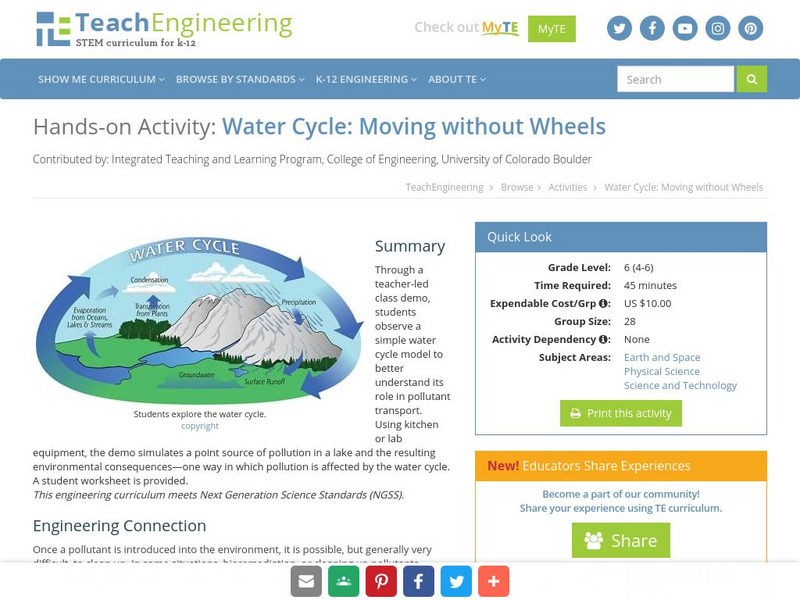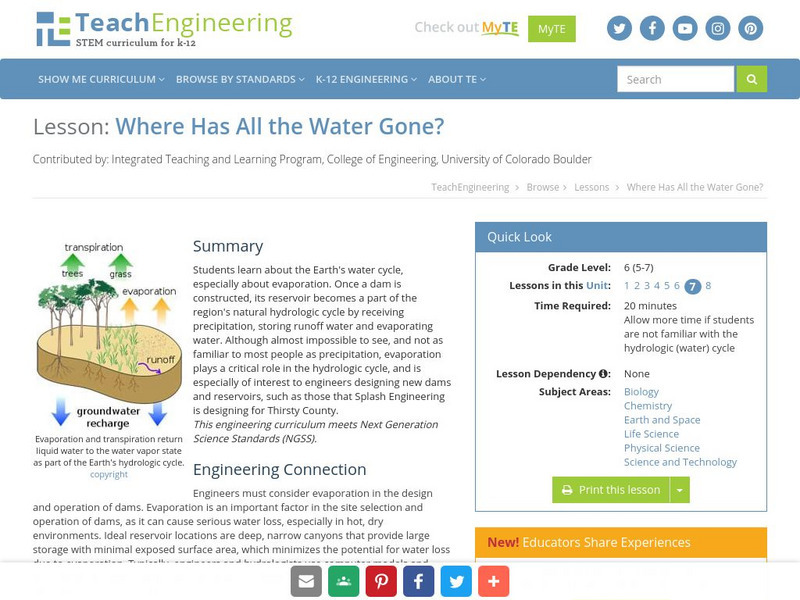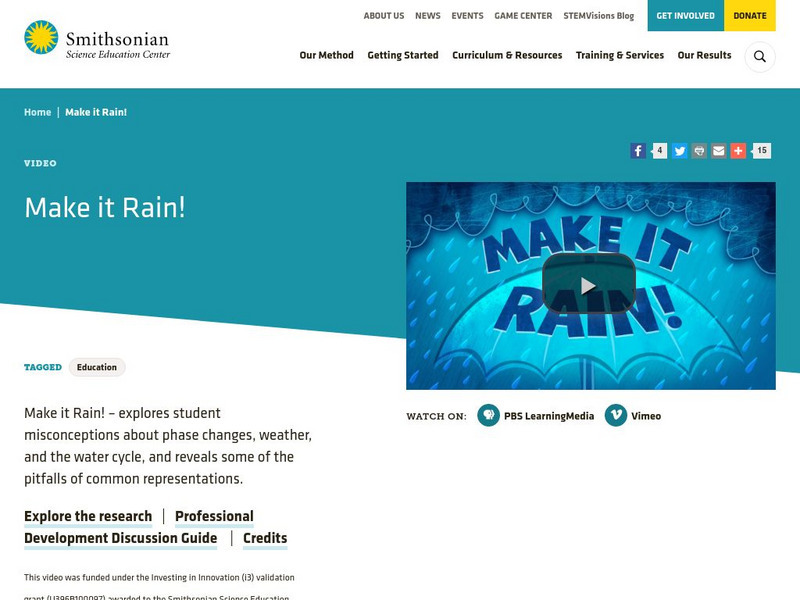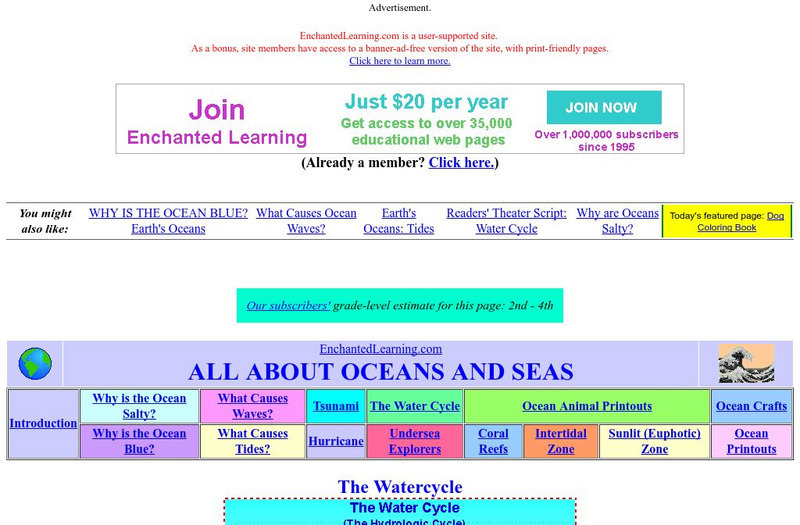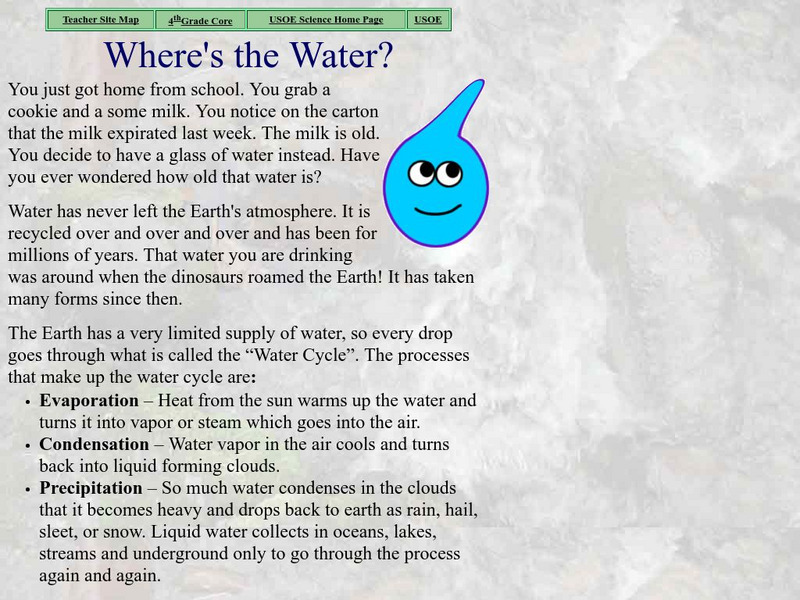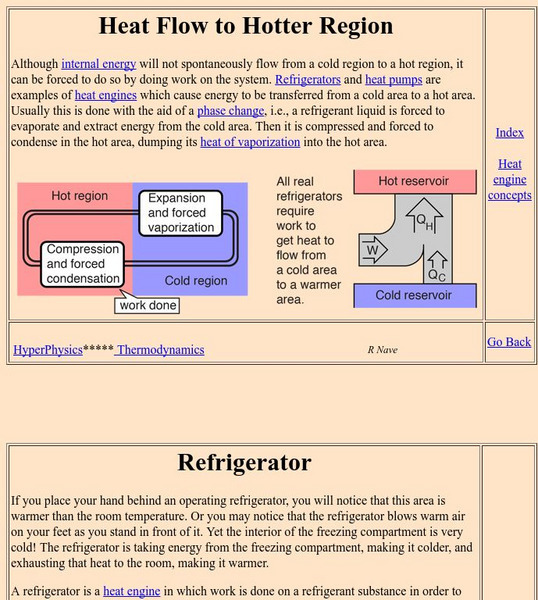American Chemical Society
Middle School Chemistry: Chapter 2: Changes of State
Five chemistry lessons about phase changes between the states of mattter complete with handouts and animations.
PBS
Pbs Learning Media: The Sun and the Water Cycle
Learn about the water cycle through the adventures of two sisters. They will explain how the sun powers the water cycle and describe the different states of water. A glossary and labeled illustrations accompany the video. For the...
CK-12 Foundation
Ck 12: Significance of Carbon
[Free Registration/Login may be required to access all resource tools.] This activity explores the significance and functions of carbon and explains why carbon is essential to life on Earth. Students will investigate and explain cellular...
CK-12 Foundation
Ck 12: Liquids
[Free Registration/Login may be required to access all resource tools.] In the following online tutorial students will describe a liquid according to the kinetic-molecular theory. They will also learn how a liquid exhibits surface...
TeachEngineering
Teach Engineering: Moving Without Wheels
In a class demonstration, students observe a simple water cycle model to better understand its role in pollutant transport. This activity shows one way in which pollution is affected by the water cycle; it simulates a point source of...
TeachEngineering
Teach Engineering: Natural and Urban "Stormwater" Water Cycle Models
Students apply their understanding of the natural water cycle and the urban stormwater water cycle, as well as the processes involved in both cycles to hypothesize how the flow of water is affected by altering precipitation.
TeachEngineering
Teach Engineering: Where Has All the Water Gone?
Young scholars learn about the Earth's water cycle, especially about evaporation. Once a dam is constructed, its reservoir becomes a part of the region's natural hydrologic cycle by receiving precipitation, storing runoff water and...
Smithsonian Institution
Smithsonian Science Education Center: Make It Rain
How do you show students that the water cycle is more than just the traditional model of the ocean, clouds, and mountains and actually a part of their daily lives? This video will show multiple models of different part of the water cycle...
Other
Virtual Field Trip: Water/aquifers
This virtual field trip for middle school students looks at aquifers and their place in the hydrologic cycle. Students learn why and how it is important to protect the source of your drinking water and some unique details about the...
Enchanted Learning
Enchanted Learning: The Water Cycle
Great colorful chart of the water cycle, with background information. Provides additional links for more information on the water cycle.
PBS
Pbs Learning Media: Biome in a Baggie
This ZOOMSci video segment shows how to create self-contained environments and explore how plants grow under different conditions. [3:24]
Utah Education Network
Uen: Water Cycle
Activities demonstrate how the water cycle maintains itself.
Utah Education Network
Uen: A Water Cycle Chamber
Activity helps with understanding the water cycle.
Utah Education Network
Uen: Miniature Water Cycles
Fourth graders will construct a model of the water cycle in action.
Utah Education Network
Uen: How Do You Dew?
See how the processes of condensation and evaporation occur.
US Geological Survey
U.s. Geological Survey:the Water Cycle for Kids and Students: Advanced Students
Hyperlinked diagram provides an in-depth explanation of each phase of the Earth's water cycle.
Utah State Office of Education
Utah Science: Where's the Water?
Discover the ins and outs of the water cycle through this collection of experiments and activities.
American Chemical Society
Middle School Chemistry: Changing State: Condensation
Students investigate water cycle processes by testing how cooling affects the rate of condensation of water vapor.
Utah Education Network
Uen: Trb 4:1 Investigation 6 Water on the Move
Activity provides an understanding of the water cycle.
PBS
Pbs Learning Media: Ways of Watersheds
Learn about the four phases of the water cycle, the ways in which watersheds are crucial to healthy water, and the best ways to manage local watersheds with this interactive lesson plan.
Science Buddies
Science Buddies: Make a Miniature Water Cycle Model
In this activity, you will investigate some of the processes that make water move in and out of the atmosphere by making a miniature water cycle model inside a plastic bag.
Science Buddies
Science Buddies: Make a Water Cycle Model
For this lesson, students will explore how water is continually cycled among land, the oceans, and the atmosphere.
Georgia State University
Georgia State University: Hyper Physics: Heat Flow to Hotter Region
Heat flow from a hot region to a cold region is described and explained. Applications of this phenomenon (specifically heat pumps and refrigerators) are discussed. Excellent graphics.





